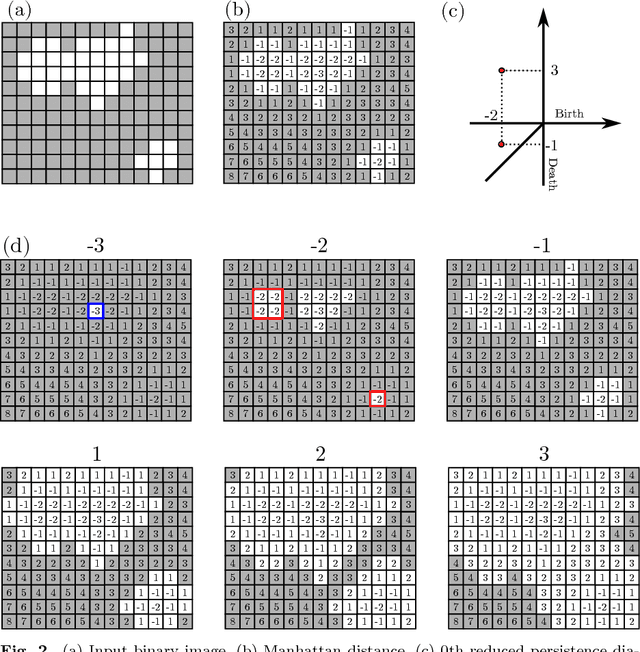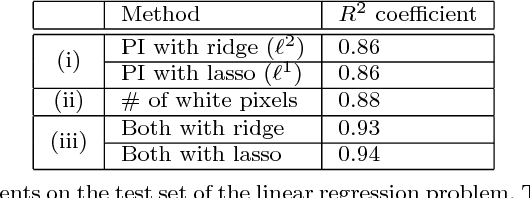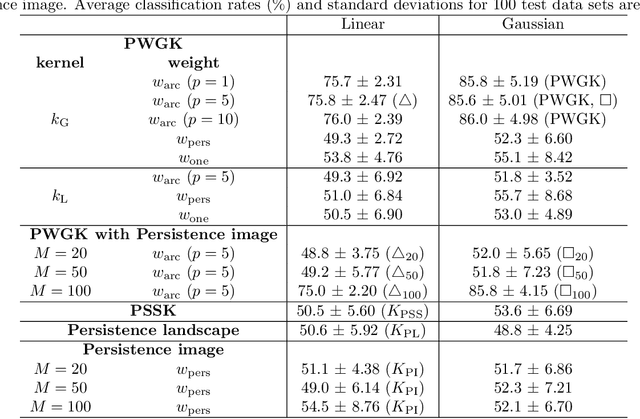Yasuaki Hiraoka
Topological Node2vec: Enhanced Graph Embedding via Persistent Homology
Sep 15, 2023Abstract:Node2vec is a graph embedding method that learns a vector representation for each node of a weighted graph while seeking to preserve relative proximity and global structure. Numerical experiments suggest Node2vec struggles to recreate the topology of the input graph. To resolve this we introduce a topological loss term to be added to the training loss of Node2vec which tries to align the persistence diagram (PD) of the resulting embedding as closely as possible to that of the input graph. Following results in computational optimal transport, we carefully adapt entropic regularization to PD metrics, allowing us to measure the discrepancy between PDs in a differentiable way. Our modified loss function can then be minimized through gradient descent to reconstruct both the geometry and the topology of the input graph. We showcase the benefits of this approach using demonstrative synthetic examples.
Persistence Diagrams with Linear Machine Learning Models
Jul 06, 2017



Abstract:Persistence diagrams have been widely recognized as a compact descriptor for characterizing multiscale topological features in data. When many datasets are available, statistical features embedded in those persistence diagrams can be extracted by applying machine learnings. In particular, the ability for explicitly analyzing the inverse in the original data space from those statistical features of persistence diagrams is significantly important for practical applications. In this paper, we propose a unified method for the inverse analysis by combining linear machine learning models with persistence images. The method is applied to point clouds and cubical sets, showing the ability of the statistical inverse analysis and its advantages.
Kernel method for persistence diagrams via kernel embedding and weight factor
Jun 12, 2017



Abstract:Topological data analysis is an emerging mathematical concept for characterizing shapes in multi-scale data. In this field, persistence diagrams are widely used as a descriptor of the input data, and can distinguish robust and noisy topological properties. Nowadays, it is highly desired to develop a statistical framework on persistence diagrams to deal with practical data. This paper proposes a kernel method on persistence diagrams. A theoretical contribution of our method is that the proposed kernel allows one to control the effect of persistence, and, if necessary, noisy topological properties can be discounted in data analysis. Furthermore, the method provides a fast approximation technique. The method is applied into several problems including practical data in physics, and the results show the advantage compared to the existing kernel method on persistence diagrams.
 Add to Chrome
Add to Chrome Add to Firefox
Add to Firefox Add to Edge
Add to Edge